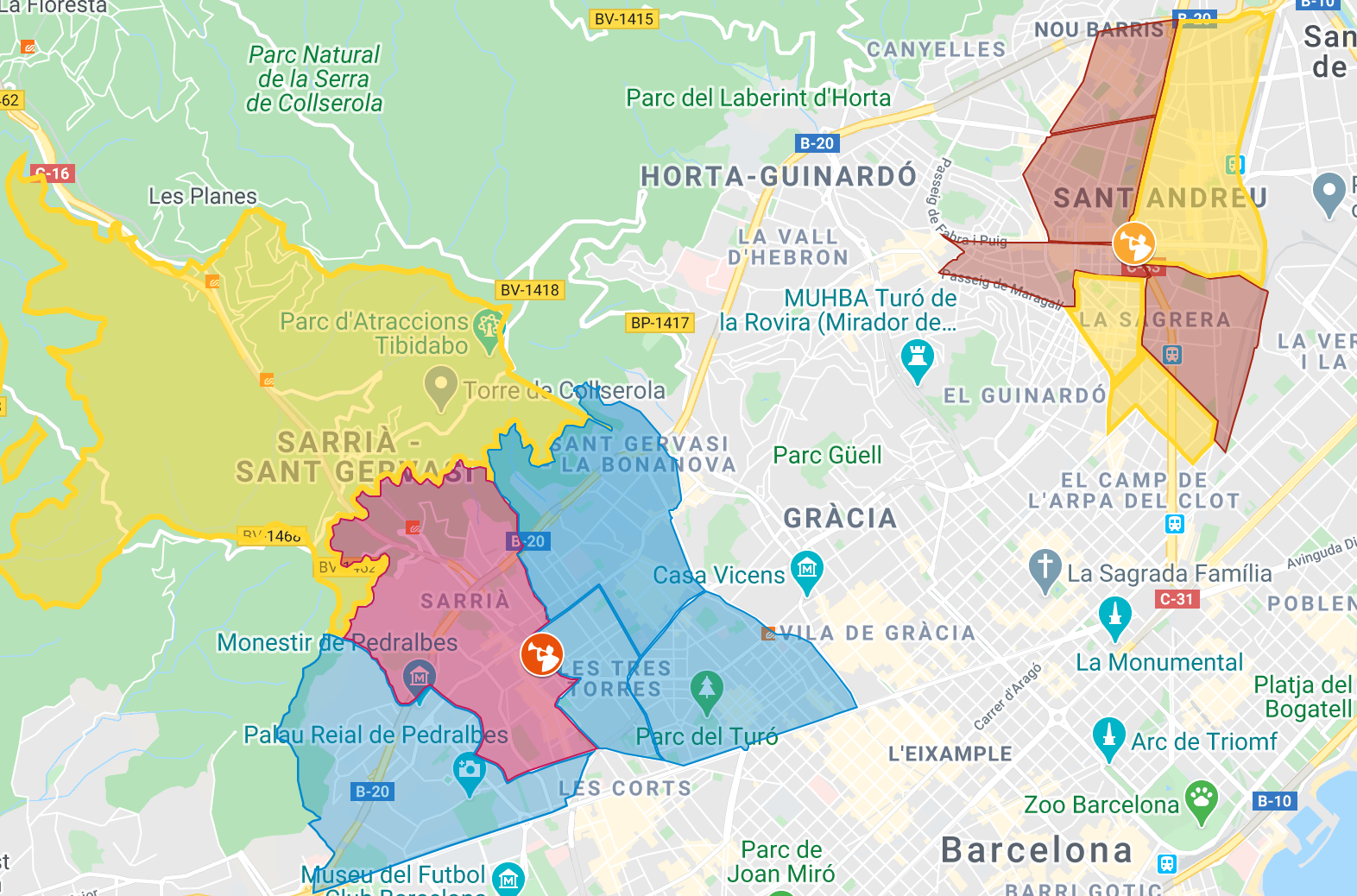After a few months cleaning up debts and trying to find a more moderate tone, Catalan Civil Society (SCC) has returned to its essence and has restored its harsh discourse against the Catalan pro-independence movement. Last Friday the group leaders presented a battery of actions for the coming months to combat the Catalan independence process, among which, a surprising one. The unionist group has decided to block access to Barcelona’s Vallvidrera tunnels every Friday until the daily protest on Meridiana Avenue, which has been going on for four months, is over. SCC considers the Meridiana protests "unacceptable". But beyond the incoherence of blocking a road in protest against another road blocking, the reason the organizers gave for doing so is surprising.
"Until workers can get back home peacefully after long work days, pro-independence supporters will not be able to go skiing peacefully at weekends either," said president of the unionist organisation Fernando Sánchez Costa. A statement full of stereotypes and contradicted by data. With this simplistic argument, which can only be considered a slogan, SCC activists suggest that pro-independence supporters are all wealthy citizens who have a house in La Cerdanya and can go skiing, while unionists - constitutionalists, in their own words - are workers who have to work "long hours" to make ends meet.
Are there two million rich people in Catalonia? Nothing could be further from the truth. While it is true that, broadly speaking, independence wins the largest number of votes from middle classes and that the most disadvantaged sectors tend to have a more unionist vote, it is also true that upper classes, especially in Barcelona, are against independence. In fact, to refute Sánchez Costa's argument one only has to cross-check the results from the last Spanish election by neighborhood with the income figures of the citizens who live in each.
In the richest neighbourhoods: unionist majority
According to data from the Barcelona City Council, the neighbourhoods with the highest incomes in the city are, in that order, Pedralbes, les Tres Torres, Sarrià, Sant Gervasi - Galvany and Sant Gervasi - and La Bonanova, with average gross incomes of between 80,000 and 100,000 euros per year. According to SCC’s argument, independence ought to win in these neighborhoods, however, the reality is quite the opposite. Of these five neighbourhoods, only in Sarrià did a pro-independence party win in last November 10th election, Together for Catalonia (JxCat). In the other four neighbourhoods Popular Party (PP) won and far-right Vox obtained good results. Moreover, the sum of the three pro-independence parties that ran for the election - JxCat, ERC and the CUP - was very poor in all four locations.
In Pedralbes, the independence movement only obtained 32.6% of the votes, compared with 60.7% for the forces in favour of Spanish unity. Similar to the results in Tres Torres, where it was 34.8% to 57.8%, in Sant Gervasi-Galvany, where the difference was 38.2% to 51.8%, or in Sant Gervasi-La Bonanova, which was 38.4% for pro-independence parties and 51% for the unionists. Considering these data, it is surprising that SCC has decided to block a road in this area, where most residents are unionist. If the idea is really to harm pro-independence supporters, and not to generate a headline, it is clear that the location chosen is not the most suitable.
On the other hand, in the area where the Meridiana is blocked daily, the data also partly disprove the argument that SCC wants to impose. Residents of the area, especially those who live around the daily protest, are not as unionist as one might think. In fact, in the nearby areas of Sant Andreu, el Congrés and Navas, it was Catalan Republican Left (ERC) who won the last Spanish elections, and in all three neighbourhoods pro-independence vote was higher than unionist vote. It is also true, however, that Catalan Socialists (PSC) won many of the neighbourhoods in the area, and that the lower the income, the lower the support for independence in these neighbourhoods.
Valls achieved overwhelming results in upper-class Barcelona
November 10th Spanish election were no exception. In the last Barcelona local election, held on May 26th, unionist Ciudadanos (Cs) in coalition with Manuel Valls achieved overwhelming results precisely in the richest neighborhoods of Barcelona. They got 34,8% in Pedralbes, 33,8% in Tres Torres, 27,8% in Sant Gervasi-Galvany and 27% in Sant Gervasi-La Bonanova, while he was first in Sarrià but with a narrower margin and 21% of the votes. In contrast, in the Meridiana area, the vote was basically shared between Barcelona in Common (BComú) and PSC, with ERC right after them in some of the neighbourhoods, like Sant Andreu where it was practically tied with BComú’s Ada Colau and ERC’s Ernest Maragall winning in el Congrés and Navas.
SCC will begin blocking roads next March 6th and, in principle, plans to repeat the protest every Friday until the Catalan administration forces the Meridiana protest to end or until protesters give up. However, considering that the Meridiana protesters have been resisting for almost 150 nights and that the Catalan Ministry of the Interior has already warned that they have no intention of banning either concentration, SCC’s capacity to resist will be put to the test. If their protests last too long, however, it may end up being a shot in the foot, harming their own supporters.

